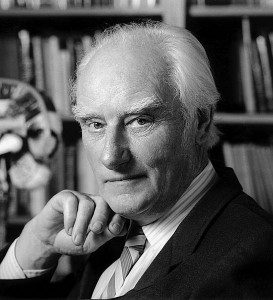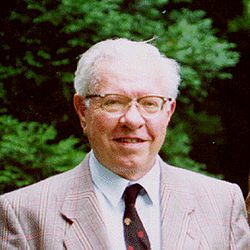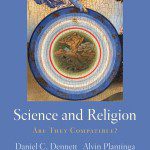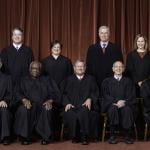Not natural theology, natural teleology…
Say what?
Like the teleological argument, just no God. That’s right, fine turning is not just reserved for theists. I recently came across the term in Thomas Nagel’s Mind and Cosmos where he described natural teleology as “other laws of nature that our biased toward the marvelous”, ultimately an undiscovered and “irreducible part of the natural order” that will account for the origin of time, life, consciousness, and moral realism, which he claims are lacking in current “Neo-Darwinian” naturalistic view point. Why am I even writing about this you might ask?
Because it’s my blog and I’ll do what I want.
https://www.youtube.com/watch?v=V6Uo1nNt6LUJust kidding.
Loosen up. Relax. Smile.
I’m interested in philosophy, science, and theology and I’m always fascinated when theorists cross their respective boundaries. Stay with me.
The backlashing and controversy surrounding Nagel’s book is unsurprising. First of all, it’s complete pseudoscience. Utterly fascinating, but pseudoscience. Secondly, it challenges physicalism of mind, where many scientists and philosophers have claimed consciousness is either illusory (there really are no “mental” states) or that conscious mental states do exist but are/will be explained naturalistically.
Nagel, an atheist, more than steps out of his comfort zone as a philosopher of mind and get his hands into the cosmos and the origin of life. Most atheists are happen to admit that profound mysteries of universe and life remain, but rarely is the “the unexplained” a call for such creativity. And Nagel certainly steps out. But he’s not alone and this phrase reminded me of some other brave scientists who left the bounds of science with their creative ideas.
Somewhat related to natural teleology, it also turns out that intelligent design is not just exclusive to theists. Does the phrase “panspermia” ring a bell? It’s the idea that life began in space and travelled to earth by meteor shower.
It’s based on the principle that the universe and life is so colossally improbable, it must be, in the words of Fred Hoyle, “a put up job”. There must design behind all of this, just a natural one (Fred was a naturalist). So let’s talk about Fred for a moment.
He was the famed English astronomer that discovered the mechanism known as nucleosynthesis in which carbon was produced by nuclear reactions in stars. What the big deal?
No carbon in the universe – no life.
It turns out that the energy levels for nucleosynthesis of carbon needed to be at the perfect level, at the perfect place, at the perfect time. They we’re. What are the odds wondered Fred?
“Would you not say to yourself, ‘Some super-calculating intellect must have designed the properties of the carbon atom, otherwise the chance of my finding such an atom through the blind forces of nature would be utterly minuscule. A common sense interpretation of the facts suggests that a superintellect has monkeyed with physics, as well as with chemistry and biology, and that there are no blind forces worth speaking about in nature. The numbers one calculates from the facts seem to me so overwhelming as to put this conclusion almost beyond question.’ (Fred Hoyle, “The Universe: Past and Present Reflections.” Engineering and Science, November, 1981. pp. 8–12)
Fred had some other “Big” ideas. Have you heard of the term “Big Bang”? That’s Fred’s. Not the discovery that confirmed the term, but the term itself. He mockingly coined the phrase and rejected a finite universe with a beginning because it struck a rather curious theistic note.
He postulated a steady state universe that was infinite, yet he could not look past the anthropic principle or intelligent design, just deemed them natural causes. His version of panspermia was prompted by the apparent impossibility of abiogenesis of life on earth. It must have originated somewhere else.
“The notion that not only the biopolymer but the operating program of a living cell could be arrived at by chance in a primordial organic soup here on the Earth is evidently nonsense of a high order… If one proceeds directly and straightforwardly in this matter, without being deflected by a fear of incurring the wrath of scientific opinion, one arrives at the conclusion that biomaterials with their amazing measure or order must be the outcome of intelligent design.” (Hoyle, Fred, Evolution from Space)
Hoyle’s contribution to science was amazing, but his speculations outside of science were far reaching. A naturalistic anthropic principle?
Let’s move to “directed panspermia”. As opposed to the meteor-shower type panspermia, this panspermia proposes life was seeded here by alien civilizations.
Far out.
 Enter Nobel Nobel Prize winner and co-discoverer of the structure of the DNA molecule Francis Crick. The improbability of the origin of life on earth was more than noted in his book, Life Itself.
Enter Nobel Nobel Prize winner and co-discoverer of the structure of the DNA molecule Francis Crick. The improbability of the origin of life on earth was more than noted in his book, Life Itself.
“An honest man, armed with all the knowledge available to us now, could only state that, in some sense, the origin of life appears at the moment to be almost a miracle…”
It would be myopic to impose that he was suggesting a miracle, he clearly wasn’t. He was very much aware that his theory was beyond the purview science, but he was offering a pseudoscientific speculation as to how the origin of life could have been, should we not amount of a naturalistic explanation. He also very much sought after naturalistic solutions to the origin of life on earth (without direct panspermia), but realized even those attempts may ultimately remain a mystery.
“…So many are the conditions which would have had to have been satisfied to get it going. But this should not be taken to imply that there are good reasons to believe that it could not have started on the earth by a perfectly reasonable sequence of fairly ordinary chemical reactions. The plain fact is that the time available was too long, the many microenvironments on the earth’s surface too diverse, the various chemical possibilities too numerous and our own knowledge and imagination too feeble to allow us to be able to unravel exactly how it might or might not have happened such a long time ago, especially as we have no experimental evidence from that era to check our ideas against.” (Francis Crick, Life Itself)
Many, I’ve found, are surprised that the brilliant minds and discoverers of nucleosynthesis and the DNA structure espoused these views. Cosmology, quantum mechanics, and evolutionary biology have advanced leaps and bounds since these discoveries and speculative theories continue to be pushed forward, though the origin of time and life remain a profound mystery.
Which brings me to my final thought.
I am always fascinated when scientists become philosophers, when physics crosses over into metaphysics. I’ve had numerous discussions with people on the value and utility of philosophy and have really enjoyed the philosopher of science Massimo Piggliucci’s perspective on this as well as “demarcation” (drawing lines of separation between science and other beliefs) as he was first a biologist, then later became a philosopher of science.
One gem about philosophy (and there are many in my opinion) is that it draws the lines of separation. It calls Genesis theology. It calls the Big Bang science. It calls “natural teleology” and “direct panspermia” pseudoscience. Then, it can proceed to ask normative questions in each area (i.e., philosophy of science, philosophy of mind, philosophy of religion).
So there you have it, a few words on physics, metaphysics, and the role of philosophy in demarcation.
Image source: Christina Carson














